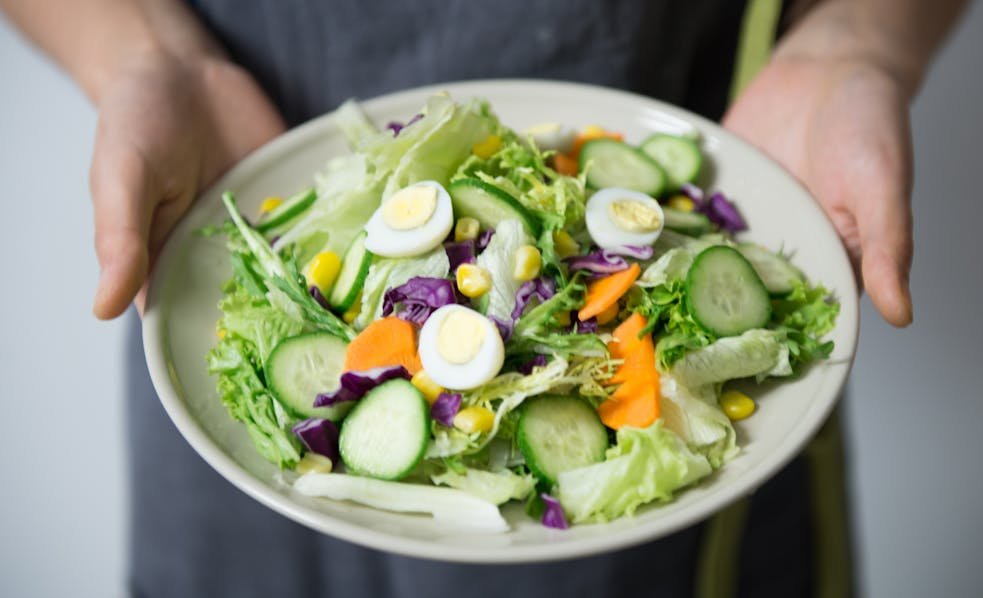Forget trendy detoxes and miracle superfoods. The real path to healthy eating is simpler—and more sustainable—than you think. From portion control to mindful meals, science-backed habits can help you feel better, manage your weight naturally, and improve long-term health.
In this post, we’ll explore 10 research-supported strategies for eating well every day. These aren’t about restriction—they’re about nourishment, balance, and habits you can actually stick to.
1. Focus on Plant-Based Foods
Most leading dietary guidelines agree: a plant-centric diet is key to good health. That doesn’t mean you need to go vegan. Instead, aim to build meals around:
- Vegetables and fruits
- Whole grains like oats, brown rice, and quinoa
- Legumes (beans, lentils, chickpeas)
- Nuts and seeds
Research shows that plant-forward diets lower the risk of heart disease, certain cancers, and diabetes, while also supporting gut health and longevity.
2. Eat Mindfully
Mindful eating means paying attention to your food—and how you feel while eating. That means no more distracted snacking in front of the TV. Instead, try:
- Slowing down your meals (it takes ~20 minutes for fullness signals to register)
- Putting down your fork between bites
- Noticing flavors, textures, and fullness
Studies show that mindful eaters tend to consume fewer calories and enjoy their food more—without needing to count every bite.
3. Embrace Whole Foods, Not Processed Ones
Ultra-processed foods—think sugary cereals, snack bars, and frozen meals—are linked to weight gain, heart disease, and inflammation. Instead, prioritize:
- Fresh produce
- Whole grains
- Lean proteins
- Foods with short, recognizable ingredient lists
One tip: shop the perimeter of the grocery store where the fresh items usually are, and avoid the center aisles filled with boxes and cans.
4. Watch Your Portions
Healthy food is great—but eating too much of anything can sabotage your goals. Portion awareness matters. Try these techniques:
- Use smaller plates and bowls
- Serve single portions, and keep extras in the kitchen
- Drink water before meals to avoid confusing thirst with hunger
Pro tip: Measure once, eyeball later. You’ll train your brain to recognize realistic portions.
5. Make Fiber Your Friend
Fiber does wonders: it supports digestion, regulates blood sugar, keeps you full longer, and may lower cholesterol. Yet most people don’t get enough.
Aim for 25–30 grams of fiber daily from:
- Whole fruits and vegetables (especially with skins)
- Beans and lentils
- Chia seeds, flaxseeds, oats, barley
6. Choose Lean Proteins
Protein helps build muscle, maintain satiety, and stabilize energy. Include sources like:
- Eggs
- Greek yogurt
- Chicken and turkey (skinless)
- Fatty fish like salmon (rich in omega-3s)
- Plant proteins (tofu, lentils, tempeh)
7. Limit Added Sugar and Sweetened Drinks
The American Heart Association recommends no more than 25–36 grams of added sugar per day. That’s about one soda or flavored latte. Instead:
- Drink water, sparkling water, or unsweetened tea
- Check labels for hidden sugars in sauces, yogurt, bread
- Use cinnamon, vanilla, or fruit for sweetness
8. Cut Back on Alcohol and Salt
Even small reductions in alcohol and sodium can support heart health and reduce cancer risk. Try:
- Limiting alcohol to 1 drink/day (women) or 2 (men)
- Using herbs, citrus, and spices instead of salt
- Rinsing canned beans and veggies to lower sodium
9. Build Balanced Plates
Use the MyPlate method to make meal planning simple:
- ½ plate: non-starchy vegetables and fruit
- ¼ plate: whole grains
- ¼ plate: lean protein
- Side of healthy fat or dairy
This visual guide helps create balanced meals without needing a calculator or app.
10. Make Small, Consistent Changes
The biggest mistake? Trying to change everything overnight. Instead, focus on tiny tweaks that add up over time. For example:
- Swap soda for water just once a day
- Add one vegetable to lunch
- Try meatless Mondays
- Eat dinner 30 minutes earlier to improve digestion
Remember, consistency beats perfection. A sustainable habit you enjoy is always better than a short-term plan you dread.
Final Thoughts
Eating healthy doesn’t mean being perfect or giving up your favorite foods. It means making smarter choices more often—choices that nourish your body and mind. Start where you are, build slowly, and trust that every small step counts.
If you’re looking for a place to begin, choose one strategy from this list and try it for a week. You might be surprised by how good you feel—and how easily healthy eating becomes your new normal.






